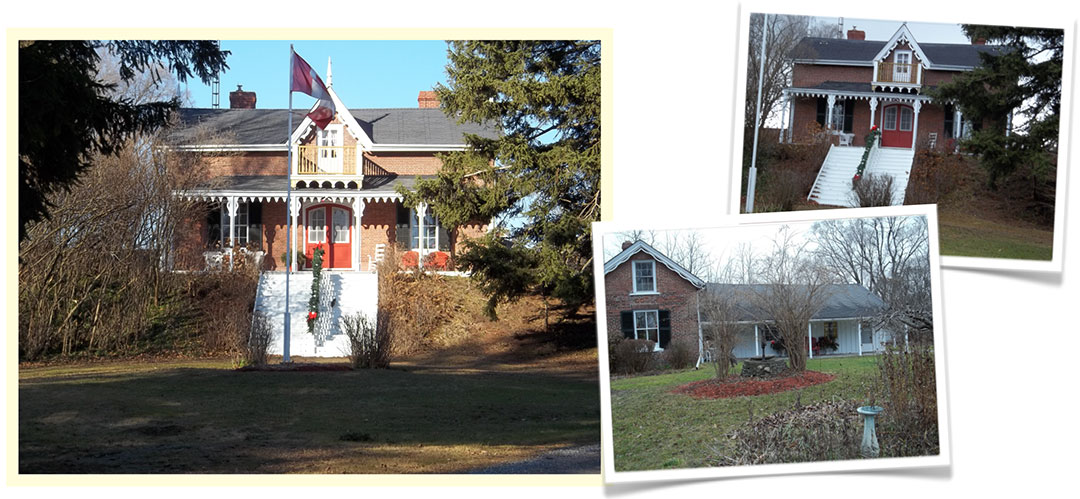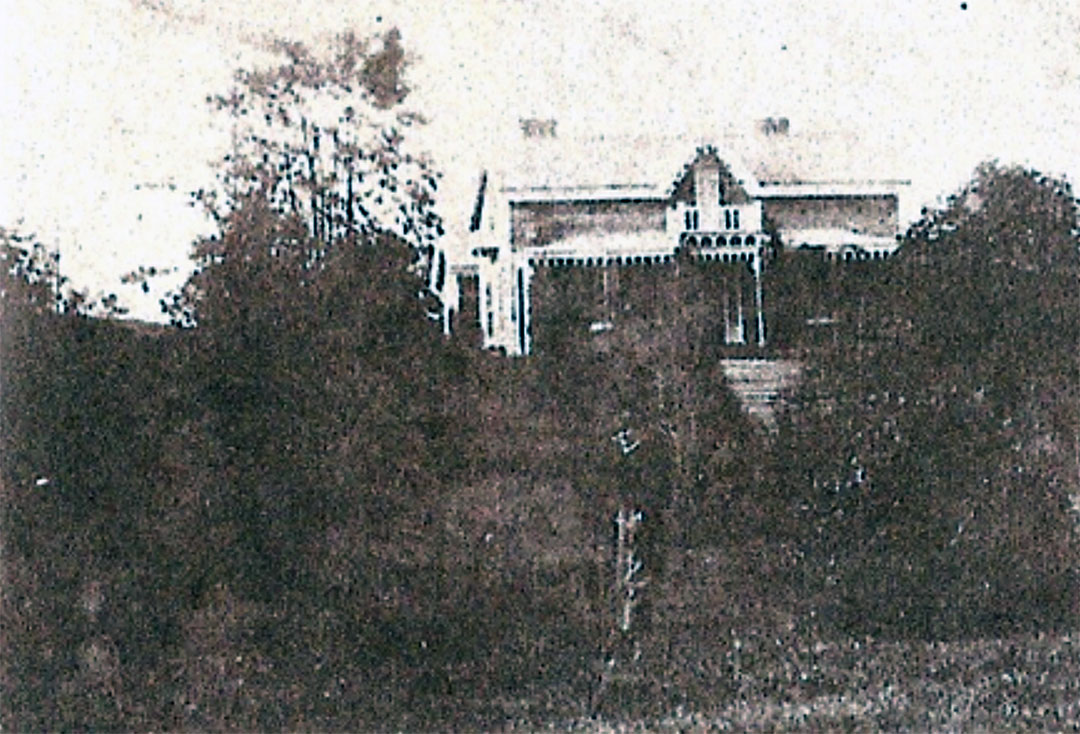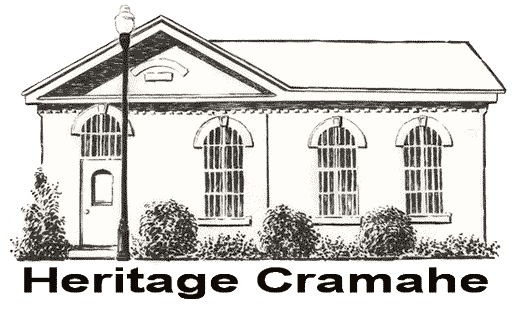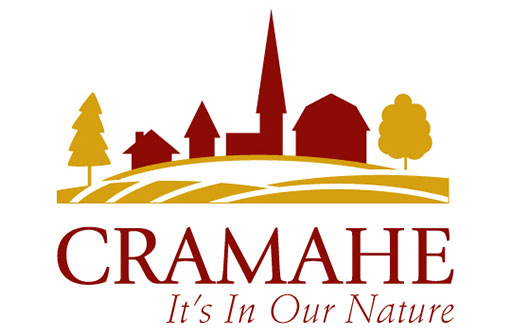Chestnut Lawn – 101 King Street East, Colborne
(c. 1850)
Roll No. 1411-012-030-10100 – Cramahe Township Ontario

Gothic Revival Cottage (Ontario Cottage)
Chestnut Lawn is clad in the red brick common to Northumberland County and is a classic one and a half or two) story Gothic revival cottage.
It has a steep central gable in the half story, which has a petite balcony, very fancy bargeboard and a large finial. It is three bay with a gable roof, two full length multi-pane windows and a double round head door at the head of the steep wooden entry stairs which feature decorative cut outs. The full length porch with its elaborate bargeboard is a real feature of this property.
Chestnut Lawn has a peak roof and two massive chimneys.
There is a very long, single story board and batten “tail” with an overhanging porch offering shelter for the side door. This “tail” significantly augments the square footage of the property.
The majority of the windows are multi pane, some six over six and at least one window is two over two.
There is an old stone well and pump just outside the back door and
there are various outbuildings in the rear of the property which cannot be seen from the road.
101 King Street East is one of the premiere properties in the village.
History or Associative Value
Chestnut Lawn was built about 1850 by J.D. Goslee, a lumber merchant, who was the uncle of Elizabeth Goslee Grover who built Seaton Hall with her husband. J.D. Goslee was a very important person in 1850s Cramahe, witness the fact that he generously donated land and materials to build the Trinity Anglican Church in Colborne in 1843. The occupants of Chestnut Lawn today, are the third generation to live there and they advise that their outbuildings once housed a cooperage and apple packing business.
Additional Historical and Genealogical Information
On 3 February 1863 George Goslee sold Reid Block F, including the property now called 101 King Street East, to John McMurrich (1804-1883). McMurrich was never a resident of Colborne: he was a resident of Toronto from 1833 until his death. Originally a dry-goods merchant, he was a member of the Legislative Council of Upper Canada and later of the Legislative Council of Ontario from 1862 to 1871.
McMurrich owned Reid Lot F for only a week, selling it on 9 February 1963 to Anna Alida Webb (née Keller, 1833-1913), wife of Colborne merchant George Washington Webb (1828-1889). The Webbs first appeared in Cramahe censuses in 1861 and lived there for the rest of their lives. They had three sons: Thomas Frederick (1858-1933), Charles W. (1860-1891), and Frank Leslie (1864-1937).
George W. Webb died of hemorrhage from an aortic aneurism in 1889 and Anna A. Webb died of breast cancer in 1913. Before that, however, they sold the part of Reid Block F on which 101 King Street East stands to Annie McGlennon (nee Shaw, 1844-1920) on 28 June 1887. Her husband, James McGlennon (1841-1915), was a nurseryman, manager of the Chase Brothers Nursery in Colborne. They had nine children: Frederick O. (1868-1907), Thomas (1870-1924, James Shaw (1872-1938), Mary Maud (ca. 1877-?), Annie (1878-?), John Austin (1881-1944), Henry M. (1883-1884), Archibald Campbell (1885-?), and William Wallace (1888-?). Their daughter Annie was the wife of dentist William George Robertson (1873-?) who practiced next door in Seaton Hall (LINK).
James McGlennon died of heart failure in 1915. Shortly before her own death in 1920 of “acute indigestion”, Annie McGlennon transferred the property at 101 King Street east to her second-youngest son, Archibald Campbell McGlennon, a physician, on 26 June 1918. He was married to Isabel H. Bryce (1896-1971).
“How Firm A Foundation” (Argyris 2000) refers to this house as “Chestnut Lawn” and states that the house was built around 1850 by James and George Goslee. James Goslee lived in a house on the far side of Seaton Hall from Chestnut Lawn. His daughter Elizabeth and her husband John M. Grover lived in Seaton Hall. Perhaps George Goslee lived at Chestnut Lawn? Certainly the Webbs lived there. Here is a photograph from around the 1870’s, judging from the clothing worn by the man in the foreground, who is purported to be George Webb.

Similarly, the McGlennons clearly lived there as well. Their descendants still do (or at least did as of the publication of “How Firm a Foundation”.




